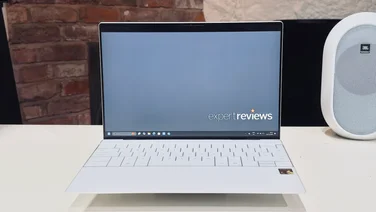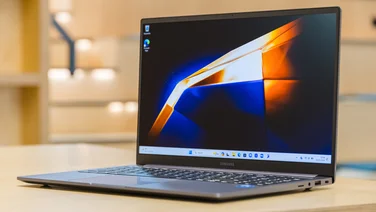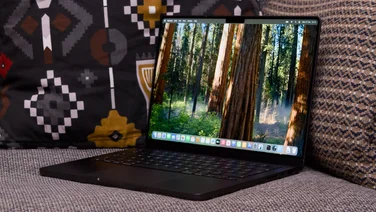To help us provide you with free impartial advice, we may earn a commission if you buy through links on our site. Learn more








Rather than follow the bog-standard template for tablet hardware, Asus has made a clear effort to distinguish its products with different designs. First up was the rather good Asus Eee pad Transformer, which had an optional clip-on keyboard to turn the tablet into an Android-powered netbook.
Now, with its Eee Pad Slider, Asus has gone one step further, integrating a keyboard underneath the screen’s sliding mechanism that gives the product its name. Pull the edge of the display up and it moves on hinges until it stands at around a 45-degree angle. There’s no further adjustment available, but we found the screen angle about right for using the tablet and keyboard comfortably on our lap or a desk.

The slider is so-named for its clever sliding hidden keyboard
The Chiclet-style keyboard isn’t full size, but the keys are all a decent size. Typing, for the most part, is pretty comfortable, too. We found that the keys had a light action, although the feedback’s not particularly good, making it fairly easy to make typos until you get used to it. One thing that’s harder to get over is the lip that sits in front of the spacebar. This is particularly annoying when the tablet’s sat on your lap, as we found that we hit the lip more than we hit the spacebar. Still, once we’d gotten used to the keyboard layout we found that we could type faster on the Slider than using an onscreen keyboard, although slower than when we used the Transformer’s keyboard.
We’re pleased to say that the bugs we noticed with the Transformer, where we couldn’t type into a Google Doc have gone, and the keyboard now seems to work with everything.

It all feels well-engineered, and looks stylish in both modes
One of the main reasons to have a keyboard is for work. As with the Eee Pad Transformer, Asus provides Polaris Office for free, which lets you edit and create Microsoft Word, Excel and PowerPoint compatible Files. It can even integrate with Google Docs, pulling in files from the free cloud service. It’s a bit annoying to use, as it doesn’t support the standard Android copy-and-paste, and you can’t use shift-cursor to select text. Instead, you have to double-tap the screen to put the software into edit mode, and use the copy, cut or paste commands from the drop-down menu. That said, having an office suite as standard is still handy.

You don’t have to work off the Slider’s internal memory (16GB or 32GB models are available), as there’s a USB port that you can use to attach mass-storage devices, browsing their files using the built-in file browser. It makes it easier to grab a file from your computer and keep working on it on the move. In addition, there’s a Micro SDHC card slot.
Fold the screen flat and the Slider turns back into a regular Android tablet. Due to the keyboard, it’s a bit thicker than we’re used to at 17mm. At 906g, it’s also a touch heavier than a normal Android tablet, but it’s around 400g lighter than the Eee Pad Transformer with the keyboard dock attached, making it the better choice to lug around all day.

The slider runs the latest tablet-specific version of the operating system, Android 3.2, which irons out some of the first release’s problems, without adding any new features of note. In particular, the OS is that bit smoother and once the tablet had finished booting, the transitions between the home screens was silky smooth.
Asus has barely touched the OS, which is a good thing in our opinion, leaving Android to work the way it was designed. In addition to Polaris Office, Asus has added its MyLibrary eBook app (it’s Adobe DRM compatible), File Manager (for accessing USB keys and browsing memory) and Asus Cloud. The latter gives you a year’s free online storage, after which time you’ll have to pay to use it.
As with the Transformer, the Slider’s 1,280×800 IPS screen is one of the product’s highlights. Side-by-side with the iPad 2, it’s every bit its equal in terms of image quality. Brilliant and accurate colours matched with bright whites and superb viewing angles make it a joy to use. The higher resolution than the iPad 2, means that web browsing and movies feel more natural. If you’re watching films, a pair of headphones will make sense. Although the Slider’s speakers are loud, they sit underneath the screen, so in slate mode they sound a bit muffled.

The Slider has the same great display as the Transformer
It’s all helped by the dual-core 1GHz Nvidia Tegra chip inside the tablet, which gives it plenty of power and the Slider never felt sluggish to us. This chip will handle HD video and, should you tire of watching on the 10.1in screen, there’s a Micro HDMI output so you can send video to an external display instead. Battery life is pretty good, lasting just over nine hours in our video playback test, although this is shorter than Transformer in dock mode, which lasted more than 15 hours (as a standard tablet, the Transformer lasted a similar 8h 37m).
The five-megapixel camera sits against your lap when typing. It can be activated in keyboard mode, but it’s difficult to hold and you’ll spend most of your time taking pictures of your desk. In tablet mode it’s a lot easier to hold and take pictures. Bizarrely, the focus on the camera didn’t work very well taking the sharp-looking preview image and knocking it out of focus. Detail was average in the resulting image and noise was high. Video recording at 720p (30fps) is also possible. Footage isn’t brilliant, though. Details get soft the further back in the frame you look, while noise is evident even in the brightest of rooms. Potentially more useful is the front-facing camera for video calling.

The camera isn’t great, and is next-to impossible to use when the keyboard is deployed
In terms of design the Slider is certainly very clever and the hinge feels robust and smooth in operation. The keyboard is useful, although it’s not always the most comfortable to type on. We found that the Eee Pad Transformer was easier to type on and, as it’s currently cheaper with the keyboard dock, is our preference. If you’d rather have a standard Android tablet, the Samsung Galaxy Tab 10.1 remains our top choice. For the sheer convenience of a keyboard in a relatively small form factor, though, there’s no beating the Eee Pad Slider.






